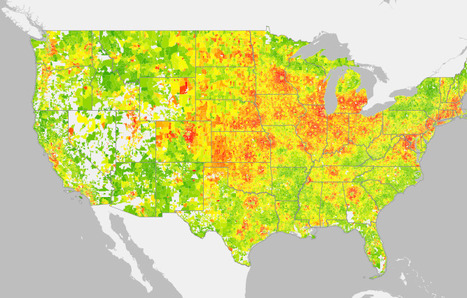The UCLA Luskin Center and Environmental Defense Fund have just released a new report looking at Los Angeles's opportunities for using more solar power (which are still 98% untapped, they say) and it includes these fascinating maps of which areas of LA County are most vulnerable to global warming.
According to the report, it's the "first study to provide specific climate-change projections for the greater Los Angeles area [in the years 2041 to 2060], with unique projections down to the neighborhood level." By mid-century, SoCal can look forward to "slightly warmer winters and springs but much warmer summers and falls, with more frequent heat waves," but the burden won't be spread around evenly: "The study predicts a likely tripling in the number of extremely hot days in the downtown area and quadrupling the number in the valleys and at high elevations." But of course higher temps aren't the only threat.
Via Lauren Moss



 Your new post is loading...
Your new post is loading...








